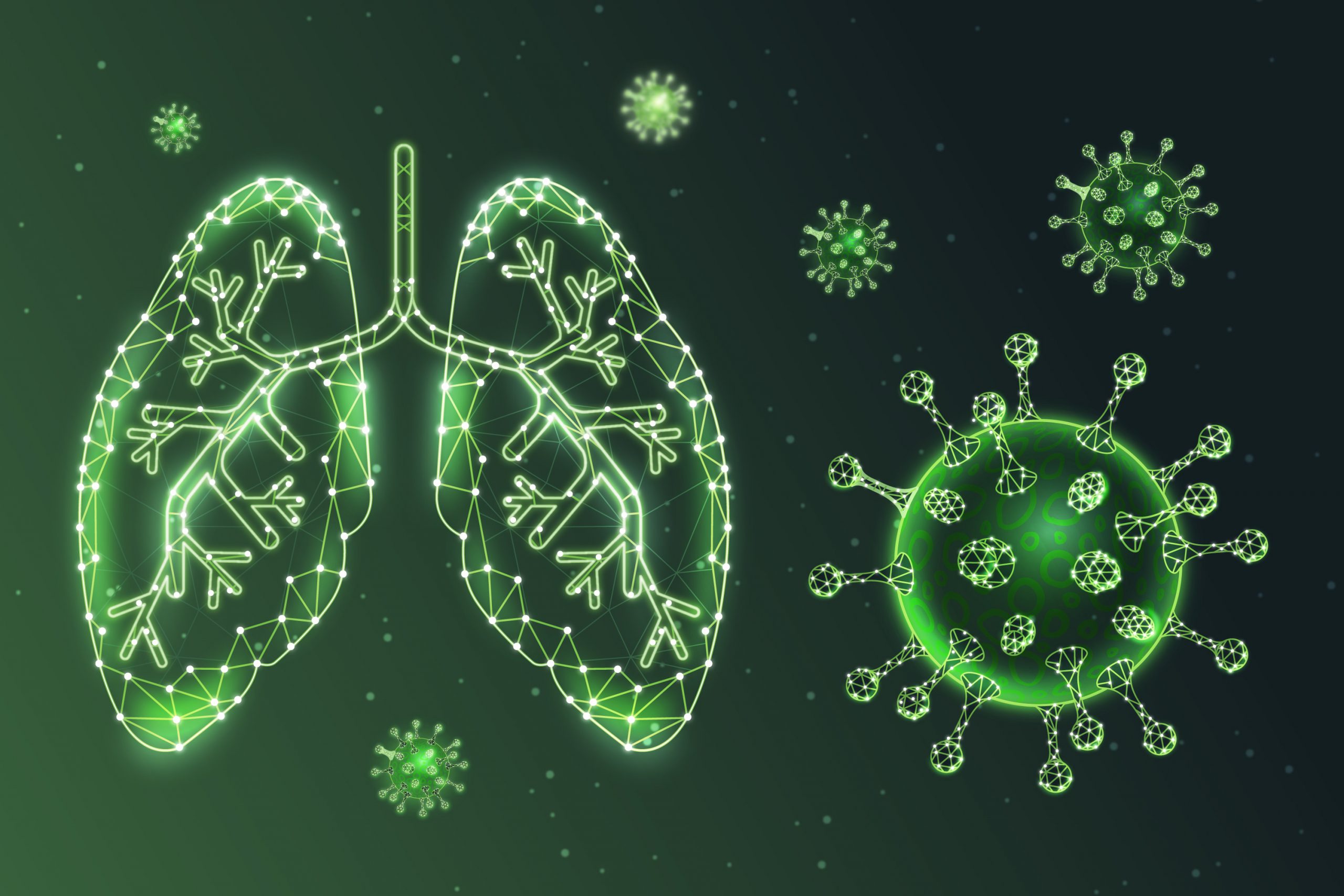

By strengthening the body’s own mucosal layer, researchers have created an inhalable powder that could shield the lungs and airways from viral invasions like flu and COVID. In mouse and non-human primate models, the powder, known as Spherical Hydrogel Inhalation for Enhanced Lung Defense, or SHIELD, decreased infection over the course of a 24-hour period. It can be used repeatedly without impairing normal lung function.
“The idea behind this work is simple—viruses have to penetrate the mucus in order to reach and infect the cells, so we’ve created an inhalable bioadhesive that combines with your own mucus to prevent viruses from getting to your lung cells,” says Ke Cheng, corresponding author of the paper describing the work. “Mucus is the body’s natural hydrogel barrier; we are just enhancing that barrier.”
Cheng is a professor at the NC State/UNC-Chapel Hill Joint Department of Biomedical Engineering and the Randall B. Terry, Jr. Distinguished Professor in Regenerative Medicine at North Carolina State University’s College of Veterinary Medicine. The non-toxic ester is grafted onto gelatine and poly (acrylic acid) to create the inhalable powder microparticles. The microparticles swell and attach to the mucosal layer when exposed to a moist environment, such as the respiratory system and lungs, increasing the “stickiness” of the mucus.
The first eight hours after inhalation are when the effects are at their peak. Over the course of 48 hours, SHIELD biodegrades and is totally eliminated from the body. In a mouse model, four hours after inhalation, SHIELD stopped SARS-CoV-2 pseudovirus particles with 75% effectiveness, which decreased to 18% after 24 hours. When testing for the H1N1 and pneumonia viruses, the researchers discovered comparable outcomes.
In a non-human primate model of both the original and delta SARS-CoV-2 variants, subjects treated with SHIELD had viral loads that were between 50 and 300 times lower than those of control subjects, and they showed no signs of lung fibrosis or inflammation that are typically present in primate infections. Viral load is the common measure used to assess exposure because monkeys do not display the same signs of infection that people do.
The researchers also examined potential toxicity both in vitro and in vivo, finding that mice given daily doses of SHIELD for two weeks maintained normal lung and respiratory function and that 95% of cell cultures exposed to a high concentration (10 mg ml-1) of SHIELD remained healthy. “SHIELD is easier and safer to use than other physical barriers or anti-virus chemicals,” Cheng says. “It works like an ‘invisible mask’ for people in situations where masking is difficult, for example during heavy exercise, while eating or drinking, or in close social interactions. People can also use SHIELD on top of physical masking to have better protection.
But the beauty of SHIELD is that it isn’t necessarily limited to protecting against COVID-19 or flu. We’re looking at whether it could also be used to protect against things like allergens or even air pollution—anything that could potentially harm the lungs.”
The study appears in Nature Materials.
more recommended stories
 Safer Allogeneic Stem Cell Transplants with Treg Therapy
Safer Allogeneic Stem Cell Transplants with Treg TherapyA new preclinical study from the.
 AI in Emergency Medicine and Clinician Decision Accuracy
AI in Emergency Medicine and Clinician Decision AccuracyEmergency teams rely on rapid, accurate.
 Innovative AI Boosts Epilepsy Seizure Prediction by 44%
Innovative AI Boosts Epilepsy Seizure Prediction by 44%Transforming Seizure Prediction in Epilepsy Seizure.
 Hypnosis Boosts NIV Tolerance in Respiratory Failure
Hypnosis Boosts NIV Tolerance in Respiratory FailureA New Approach: Hypnosis Improves NIV.
 Bee-Sting Microneedle Patch for Painless Drug Delivery
Bee-Sting Microneedle Patch for Painless Drug DeliveryMicroneedle Patch: A Pain-Free Alternative for.
 AI Reshapes Anticoagulation in Atrial Fibrillation Care
AI Reshapes Anticoagulation in Atrial Fibrillation CareUnderstanding the Challenge of Atrial Fibrillation.
 Hemoglobin as Brain Antioxidant in Neurodegenerative Disease
Hemoglobin as Brain Antioxidant in Neurodegenerative DiseaseUncovering the Brain’s Own Defense Against.
 Global Data Resource for Progressive MS Research (Multiple Sclerosis)
Global Data Resource for Progressive MS Research (Multiple Sclerosis)The International Progressive MS Alliance has.
 AI Diabetes Risk Detection: Early T2D Prediction
AI Diabetes Risk Detection: Early T2D PredictionA new frontier in early diabetes.
 Cancer Cells Learn to Self-Report: A New Frontier in Immunotherapy
Cancer Cells Learn to Self-Report: A New Frontier in ImmunotherapyHow a Drug Complex Enables Immune.

Leave a Comment